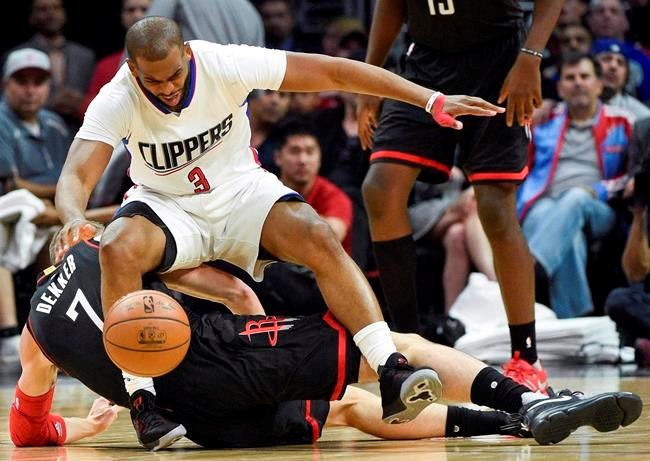On the same day that Connor McDavid was nearing agreement on an eight-year extension with the Edmonton Oilers, another star was moving elsewhere in the National Basketball Association.
Unlike the NBA, where top players like new Houston point guard Chris Paul shuffle around annually, the NHL is almost completely devoid of movement among elite-level players in unrestricted free agency. The top name available this July 1 is an offensive defenceman who's been to one all-star game.
McDavid wouldn't become an unrestricted free agent until 2026 under the terms of his new potential deal. Sidney Crosby, the best player of the past decade in the NHL, still has eight years left on his 12-year contract with the Pittsburgh Penguins — due for his first trip to the open market in 2025 when he'll be turning 38.
Teams have historically rushed to lock up stars like Crosby and McDavid as soon as possible and ensure they never get to that point. For players, the lure is the security of a long-term contract.
NHL deputy commissioner Bill Daly said the league had "no interest whatsoever" in seeing more movement among stars. Daly agreed that the movement of elite players was good for buzz, but maybe not "the right model for teams or fanbases" with regard to stability.
Indeed, the NHL might have had trouble surviving in some markets if stars jumped ship more often and the league, in its current form, has far better parity than the NBA where less than a handful of teams are truly capable of winning the championship.
But would the league be better off — as far as year-long intrigue — if stars played not in one place for most of their career, but two, three or four? Consider the excitement and intrigue generated if Crosby, McDavid or Alex Ovechkin were to ever hit the open market in their prime.
There was palpable excitement last summer when Steven Stamkos nearly became an unrestricted free agent.
In the NBA, stars are there for the taking every summer.
Paul, arguably the finest point guard of his generation and a pending free agent, was traded to the Houston Rockets on Wednesday, his third team in a Hall of Fame career. Last summer, former MVP Kevin Durant left the Oklahoma City Thunder to hook up with the Golden State Warriors and two years before that, LeBron James left Miami to rejoin the Cleveland Cavaliers.
The top available free agent in the NHL this summer is arguably Kevin Shattenkirk, a 28-year-old point-piling defenceman. Next to no available stars exist beyond that — other than those restricted free agents whom teams almost never try to poach.
Shorter contracts in the NBA — five years maximum — mean top players are far more likely to shuffle around and, of course, disappoint their teams and fanbases with quicker exits.
The NHL pushed for and ultimately got term limits on contracts during the last lockout — shortening them to a max of eight years.
"If you have a salary cap, which artificially limits what you can pay a player during a given year, the only way you can get to his market value is to extend a contract which is guaranteed," NHLPA executive director Donald Fehr said, when asked about the advantages and disadvantages of shorter contracts.
"So if you shorten them, then maybe what you have to do is loosen the strings on what can be paid. Otherwise, all you're doing is depriving players of the opportunity to get closer to whatever their market value is."
Fehr said the players would evaluate the prospect of shorter contracts when the next round of collective bargaining negotiations rolls around — the prospect of which would surely result in more NBA-like movement among stars.
Perhaps for good reason, given the higher risk of injury, the biggest stars in the NHL have typically shown themselves to more risk-averse than those in the NBA, more willing to take the security of a long-term deal for the bigger rewards, potentially, of multiple short-term pacts.
Most have shown loyalty to the teams that drafted them and sacrificed money themselves for potential betterment of the team, including Crosby, who took a relatively tame $8.7 million cap hit in 2012, and Stamkos, who was days away from unrestricted free agency when he decided to re-up for eight years with Tampa.
"I felt kind of in my heart that that was always the place I wanted to stay," Stamkos said after deciding to remain for less money with the Lightning.
There have been rare instances of grade-A stars changing teams at their own discretion, including Marian Hossa and Chris Pronger in 2009, Zach Parise and Ryan Suter in 2012 and Zdeno Chara way before that in 2006. P.K. Subban switched squads last summer, but that was through trade and after he signed an eight-year deal to stay in Montreal.
Tyler Seguin and Phil Kessel, likewise, both left Boston early in their careers, but that was without the full choice of unrestricted free agency.
Jonas Siegel, The Canadian Press

